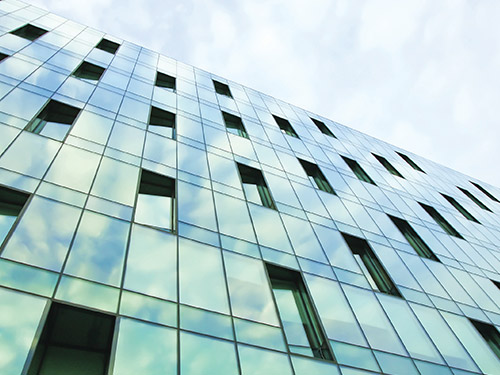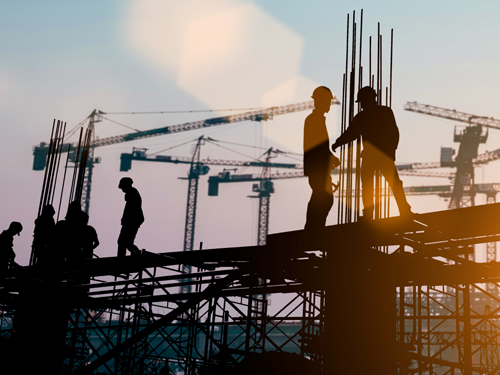As Green As It Gets
To determine just how the Outsulation® System contributes towards building green structures, it is essential to examine three key areas where the products are evaluated.
Greener Construction
Product Life Cycle: Outsulation® systems are greener throughout their lifecycle as compared to other common cladding materials because of several reasons. Firstly, the entire manufacturing process requires less energy, especially when compared to brick and stucco. This means that the embodied energy of the resources needed to extract the materials used to make the Outsulation® system is significantly lower. Secondly, the lightweight composition of the Outsulation® system reduces fuel costs associated with transportation and delivery. Lastly, the Dryvit facilities are managed to ISO standards, ensuring worldwide manufacturing excellence.
Greener Operations
Energy Efficiency: The insulation properties of Outsulation® contribute to improved energy efficiency in buildings. This results in better temperature regulation and reduced reliance on heating and cooling systems, which can help earn valuable LEED points and result in lower operational costs.
Moisture Management: Some Outsulation® systems include a water-resistant barrier, helping to manage moisture infiltration and protect the building structure from water damage. This can contribute to an improved indoor air quality and prevent issues like mould growth.
Greener Environment
Recycle / Upcycle: Many Outsulation® components are recyclable, and the system itself can be used to renovate existing exteriors without removal or disposal of the original cladding. In this way, Outsulation® contributes to sustainable building practices as it helps to reduce the environmental impact associated with construction waste.
Low Carbon Footprint: The energy savings achieved through the insulation properties of Outsulation® can also contribute to a lower carbon footprint over the lifespan of the building, as reduced energy consumption means fewer greenhouse gas emissions.
With more companies investing in and aligning their operations with principles of sustainability and corporate social responsibility, Dryvit’s Outsulation® system emerges as a holistic and environmentally conscious choice that contributes significantly to the overarching goal of creating a more sustainable, beautiful, and eco-friendly built environment.


 Sealants, Glazing and Façades
Understanding Wind Load And Its Effect on Structural Glazing
Sealants, Glazing and Façades
Understanding Wind Load And Its Effect on Structural Glazing
 Concrete, Fire Protection, Flooring, Sealants, Glazing and Façades, Waterproofing and Roofing, Infrastructure
Your Essential Guide To Protecting All Parts Of A Building Envelope
Concrete, Fire Protection, Flooring, Sealants, Glazing and Façades, Waterproofing and Roofing, Infrastructure
Your Essential Guide To Protecting All Parts Of A Building Envelope
